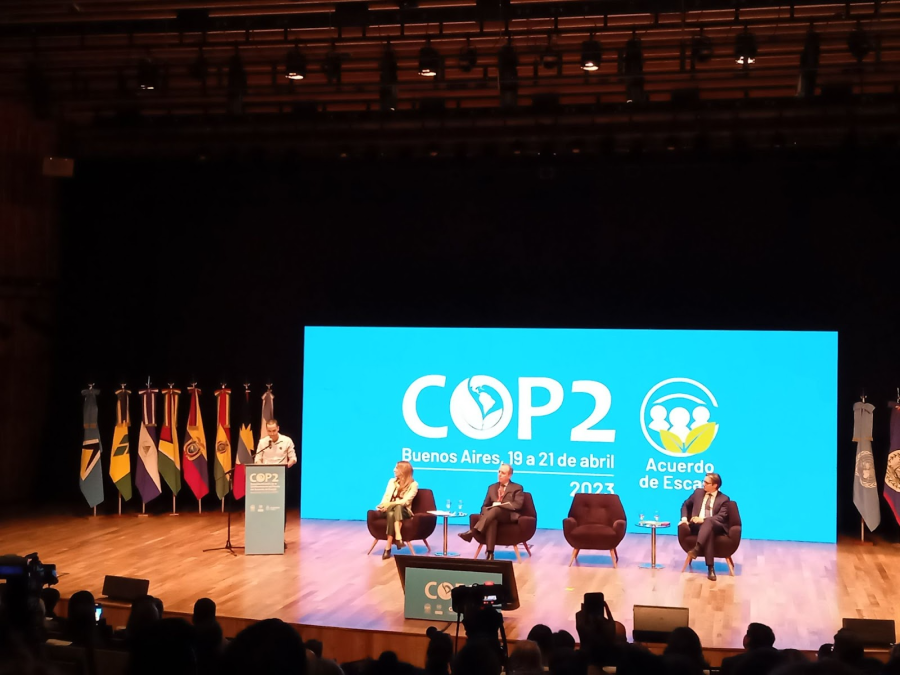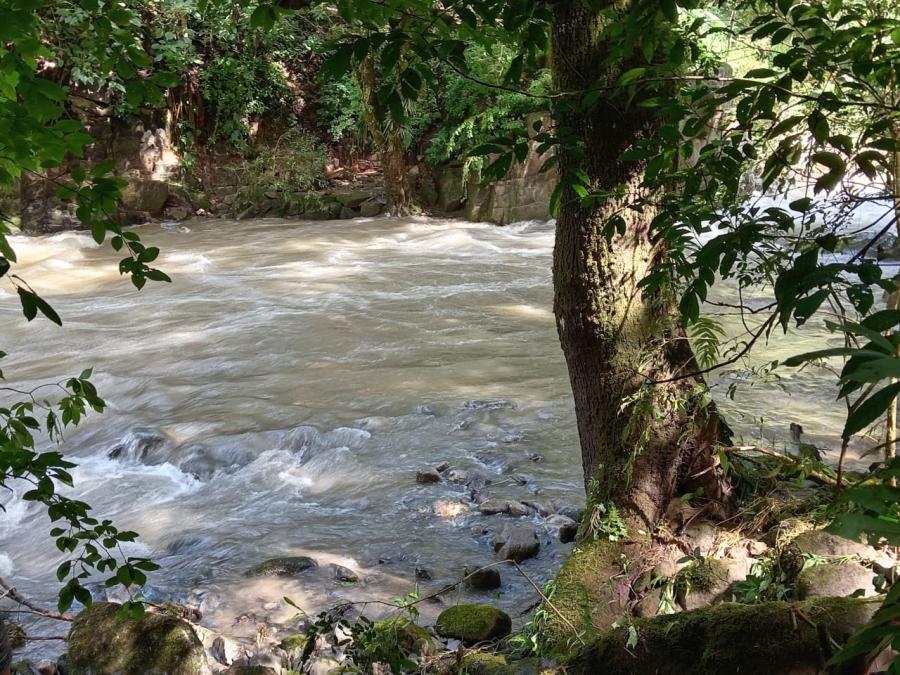More than 150 delegates in the first World Conference on Cultural Parks met at Mesa Verde National Park from Sept. 16-21, 1984, to discuss 1) technology and preservation in cultural parks; 2) touristic use of cultural parks; and 3) the relationship of native cultures to cultural park planning, development and management.
Participants sought to broaden concern for protection of cultural areas, objects and lifeways of native peoples.
The participants agreed that a general discussion-introduction on the subject of the definition of "cultural park," based on information presented at the conference, should be developed. Conference resolutions reflect a strong consensus regarding major concerns among participants.
Resolution 1. The value of diverse past and present lifeways must be recognized and those historically associated with parks, reserves and cultural programs must be protected. In the case of present lifeways, such protection must be with full cooperation of cultural groups concerned.
Resolution 2. Local peoples historically associated with cultural parks, reserves or programs should be involved, regularly and intimately, in the establishment, planning, implementation and managerial decisions of those unite or programs. In particular, the needs and views of local or native peoples must be taken fully into account in the development and use of the resources. Future conferences dealing with cultural parks, reserves or programs will include participants from indigenous and other local peoples traditionally associated with those units or programs.
Resolution 3. In accordance with basic philosophy of natural and cultural conservation, peoples whose lifeways depend on the resources of cultural and natural parks and reserves should be guaranteed continued access to the resources needed for survival and well-being through a balanced relationship between those peoples and their environment, both serving their human needs and promoting sustained, ecologically sound development.
Resolution 4. Providing the means for all people to meet their basic needs and improve their economic and social position must be considered integral to the conservation and use of world resources.
Resolution 5. Cultural parks need the highest possible professional standards if they are to fulfill a significant role in cultural and natural documentation, conservation, interpretation and tourism. Yet, there is a worldwide shortage of expertise in the proper treatment of documentation and interpretation of cultural objects, materials and properties; and a need for convenient exchange of technical information. Individual nations and international organizations should devote particular effort to the correction of this deficiency. Those efforts should include training for local people in the management of cultural and natural resources that are indigenous to them.
Resolution 6. Thorough and internationally compatible inventories, analysis, documentation and monitoring, used within carefully considered planning contexts, are essential to the planning of cultural and natural park systems, and to the accountable management and protection of cultural and natural properties and values. All international communities and nations should promote standard systems of planning and protection that can deal with park resources, with threats from outside the parks, and to protect the large numbers of cultural and natural values that will never be within park boundaries.
Resolution 7. Because mutually rewarding relationships between cultural and natural heritage on the one hand and tourist needs and uses on the other is inadequately measured and understood, nations should develop cooperative systems to monitor, evaluate and interpret this interaction as well as promote international cooperation, concerned planning and to develop management skills which serve to optimize this beneficial relationship.
Resolution 8. An enlightened local populace, working cooperatively through volunteers and public and private agencies, will assure the conservation of cultural and natural heritage for long-term benefits to the community. The international community should encourage an involved and educated public in order to strengthen cultural bonds within and between nations, contribute to the development of preservation technology and generate fiscal, political and voluntary support.
Resolution 9. As cultural and natural parks constitute an invaluable part of world heritage, it is urgent that appropriate technologies be developed and disseminated to meet with increasing internal and external threats to this heritage. Cultural and natural properties must be inventoried, analyzed, evaluated, monitored and afforded international protection with due consideration being given to maintaining original context and preventing and rectifying diminution of this heritage.
Resolution 10. In order to protect and enhance the world's cultural and natural resources, diverse agencies within individual governments should coordinate their policies and powers in order to assure that relevant programs prosper within compatible social and economic planning processes.
Resolution 11. Public and private administrators at all levels should be committed to the conservation of urban and rural heritage and to development of community benefits with full private sector involvement. Wherever possible, cultural and natural property should be preserved in a use similar to that which endowed the property with significance and in a way that preserves its integrity.
Resolution 12. Preservation and conservation of cultural property should be one of the major concerns of parks, cultural and natural reserves and museums in all nations. Archaeological sites, including rock art rites, should be recognized as truly international cultural resources, protected, interpreted and made available to the public in consultation with native peoples who may be the guardian of such sites.
Resolution 13. While recognizing the importance of the complexities of the total environment associated with cultural parks, the protection of the world's cultural heritage should not be compromised. Consequently, this assemblage, while recognizing and being cognizant of other complex world problems, will concentrate on the protection of the cultural heritage.
Resolution 14. Countries with a common cultural past should share information in order to arrive at a more correct interpretation of cultural resources.
Resolution 15. The concept and applied systems of ecomuseology should be adopted in the existing and new museological structures in parks, giving for these structures the real possibility of working as a mechanism of preservation and use developing the integration of people and their work and the natural environment, developing the identities of the community and their links with the past and the present, and preparing the future.
Resolution 16. All natíons should work for the reduction of pollutants that are degrading the cultural and natural heritage of the world.
Recommendations
All nations should be encouraged to ratify 1) the International Convention for the Protection of the World Cultural and Natural Heritage; 2) the International Convention on the Means of Prohibiting and Preventing the Illicit Import, Export and Transfer of Ownership of Cultural Property; and 3) the International Convention on Trade in Endangered Species on the Illicit Commerce, Importation and Exportation of Endangered Plant and Animal Products.
All nations should be aggressive in carrying out these international conventions and using their authority to prevent and correct actions that are harmful to the cultural and natural heritage of other nations.
All nations should take immediate action to identify sites, cultures and their respective ecosystems that are threatened with degradation or loss, and submit relevant nominations for World Heritage status and World Heritage Endangered List, and also take such actions as may be necessary to protect and preserve such properties and ecosystems, as well as to permit indigenous peoples to maintain their lifeways.
A specific suggestion is the establishment of a working commission to include significant representation of indigenous communities throughout the world to prepare a report that summarizes and analyzes the global situation of parks and indigenous peoples at the next World Conference on Cultural Parks. It is recommended that the next World Conference on Cultural Parks establish a planning committee of indigenous people historically associated with cultural parks to identify issues and participants for relevant sessions, and to organize such sessions.
Article copyright Cultural Survival, Inc.



